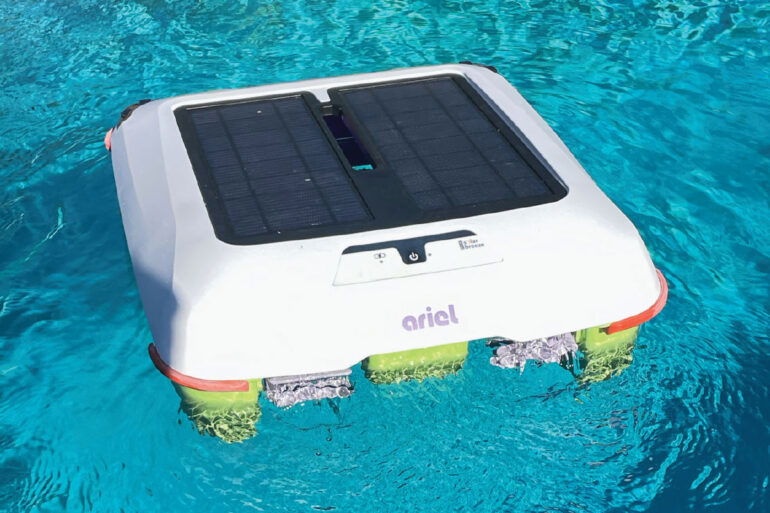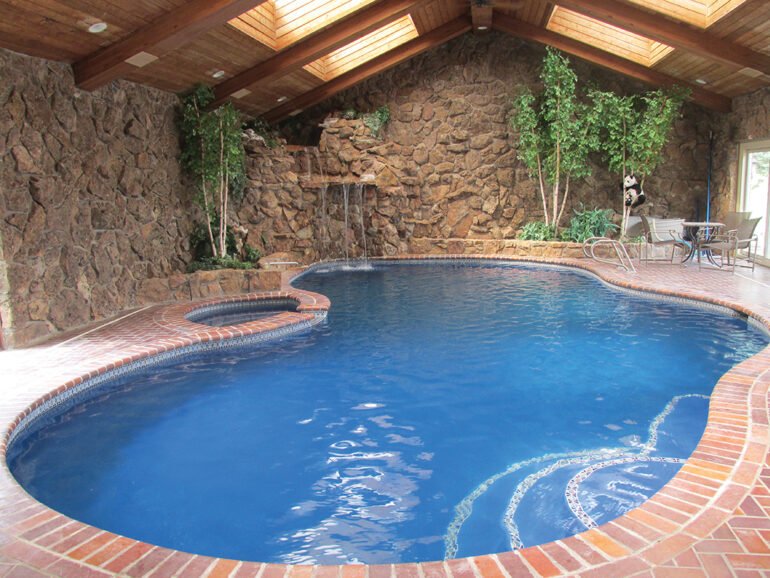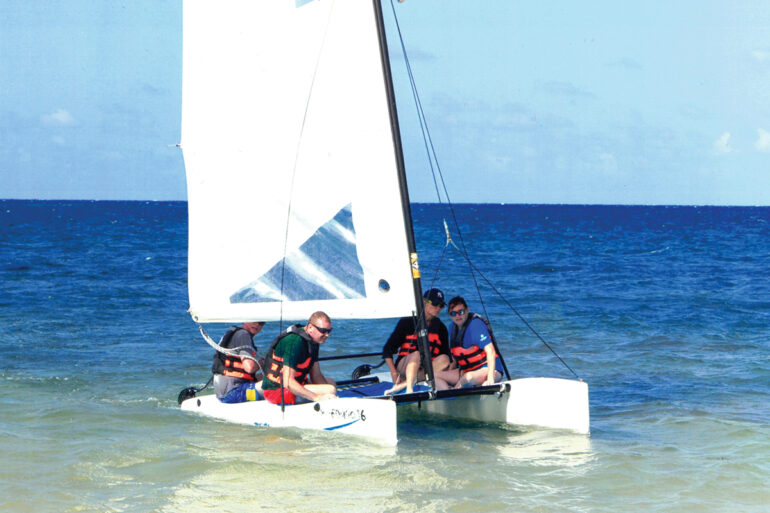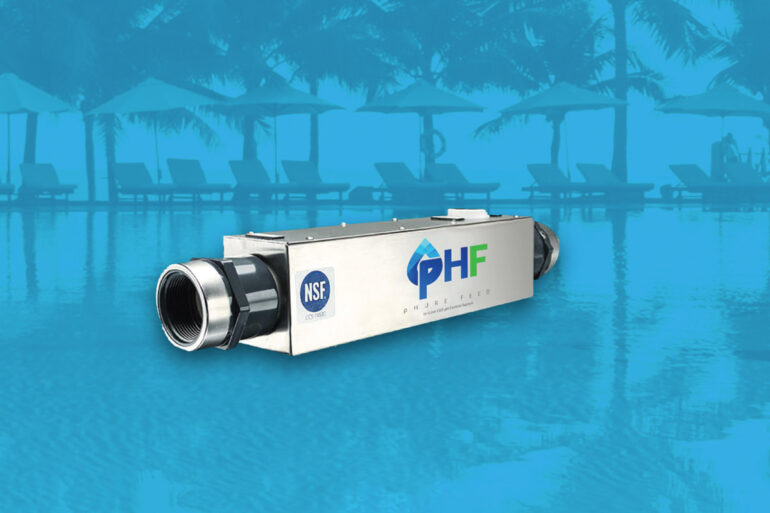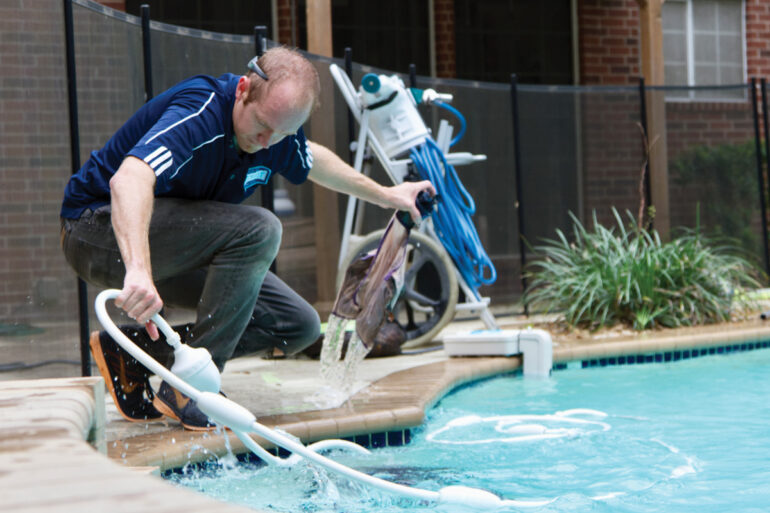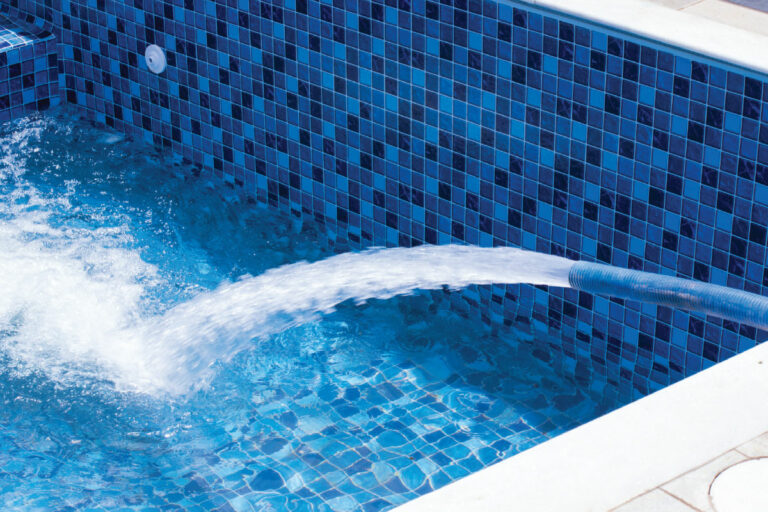HASA: Carefree Cleaning
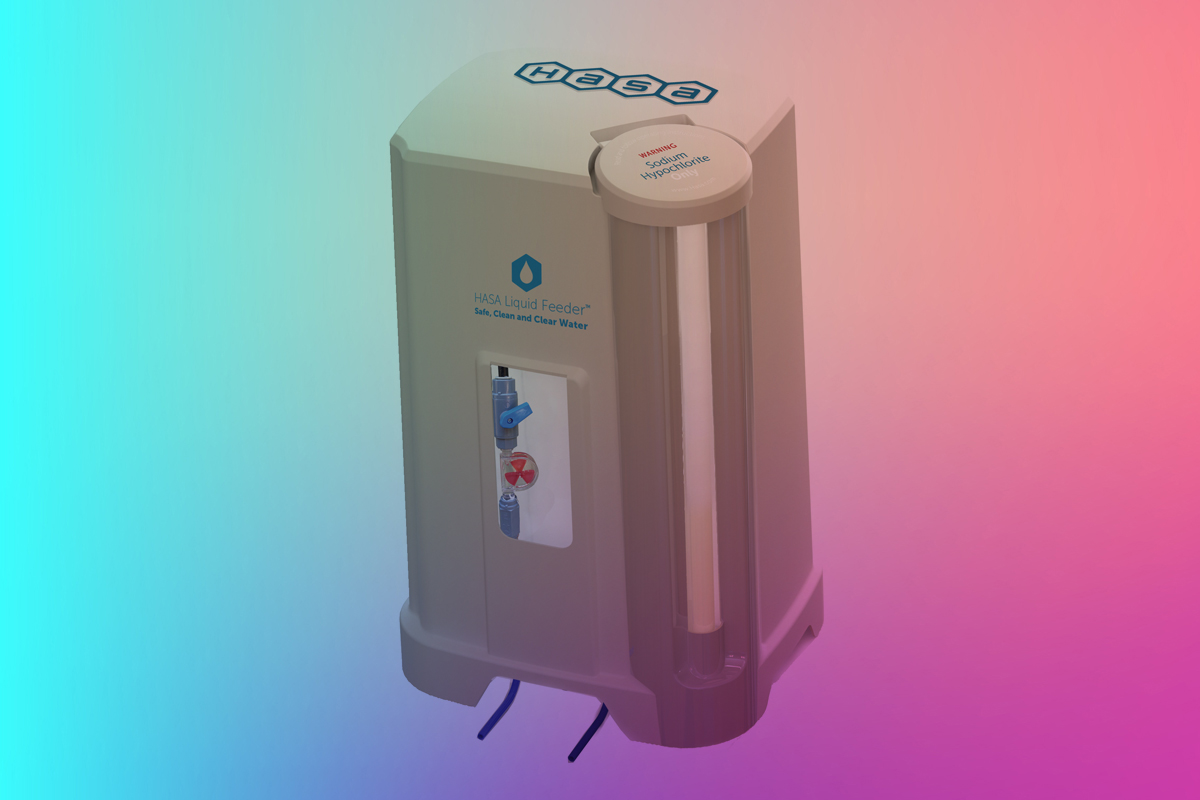
Sanitation for pools should be easy. That’s what the team at HASA thinks, anyway.

In mid-May, HASA, a producer and distributor of water treatment solutions, will release its new liquid chlorine feeder, the HASA Liquid Feeder. The non-electrical automatic sanitizer feeds the pool with HASA’s liquid sodium hypochlorite whenever the pump is running.
“For a chlorinator, for crying out loud, it’s pretty sexy,” laughs Jim Blanton, HASA’s Nevada and Utah sales representative. “It’s functional and easy to understand. No one is going to have to worry about their tabs. Liquid chlorine is much safer and easier to get.”
Blanton says the new feeder has been evolving since the HASA Liquidator came out several years back. The new product has an 8-gallon capacity, capable of holding enough chlorine to sanitize a pool for up to several weeks, based on usage and other factors.
“We had quite a bit of success with our liquid feeders,” Blanton says. “We wanted to present something for the professionals, especially because of the troublesome time with the shortage of tablets.”
HASA and its team of engineers created a product that provides a “worry-free distribution of chlorine into the pool that’s safe and easy to understand,” Blanton says.
The final design came from personal experience of pool owners, feedback from pool pros, and input from HASA’s consultant project manager, Frank Kneib. Kneib is also the executive vice president of RecH2O, LLC, a distributor, manufacturer’s sales representative, consulting firm and brand marketer in the pool and spa industry.
As a busy pool owner himself, Kneib says he needs a system simple enough for his children to use that still delivers predictable performance. “The new HASA Liquid Feeder does exactly that,” he says. “I’m extremely proud of that accomplishment from a design and field implementation perspective.”
Each week during the winter, Kneib added a gallon of 12.5% liquid chlorine to his feeder for his 11,000-gallon pool and will double that in summer. Since adding the chlorine, he hasn’t touched the dial once.
“If we’re going out of town, I can add more chlorine to the tank and just turn down the dial to dose slower, so the feeder doses over a longer period,” he adds.
Not only did Kneib design it to be easier to use, but he also kept in mind a better disinfecting option for pool owners. Liquid chlorine is superior over tablets in that sense, he says.
“The simplicity of the HASA feeder design is that it utilizes the homeowners existing pool equipment flow to dose the chemical,” he says. “Chlorine tablet feeders have a similarly simple design, but the tablets are continually adding cyanuric acid, which builds up in the pools and causes the chlorine to become less reactive as a disinfectant. CDC research clearly shows high levels of CYA drastically diminishes chlorines power to kill pathogens like cryptosporidium.”
Kneib believes both homeowners and pool pros alike will find the design of the new feeder appealing.
“It’s so simple, just add the chlorine (seasonally adjusted) and fine tune the control dial for the size of the pool,” Kneib says. “That’s the only adjustment needed. It works with modern variable-speed pumps, it works in hot desert, hard water conditions like we have here in Phoenix and in soft water and cooler climates like Northern California and the Pacific Northwest.”
Blanton says the engineering team worked to ensure a seamless design, upgrading the look and functionality of previous models. “We added a bottom drain plug, which is something the field asked for,” he says. “All valves are safely within the unit and it has a childproof lid. The fittings are encased in the machine so curious little hands don’t break things off or clumsy techs don’t snap off any parts. There’s a sight glass to see chlorine inside the machine. There’s also a large funnel for easy pouring into the machine.”
One selling point for homeowners will be the safety of the HASA Liquid Feeder, Blanton says. Pool techs, he adds, will like the efficiency of it. “It’s great for pool guys who are only visiting customers two times a month,” he says. HASA’s new feeder cannot be purchased online and takes about 30 minutes to install on a pool.
During the testing period, 26 homeowners tried it in their backyards, providing essential feedback to the HASA team. The end result is an easy-to-use and on-demand sanitizing system that makes pool maintenance a whole lot simpler, Blanton says.

